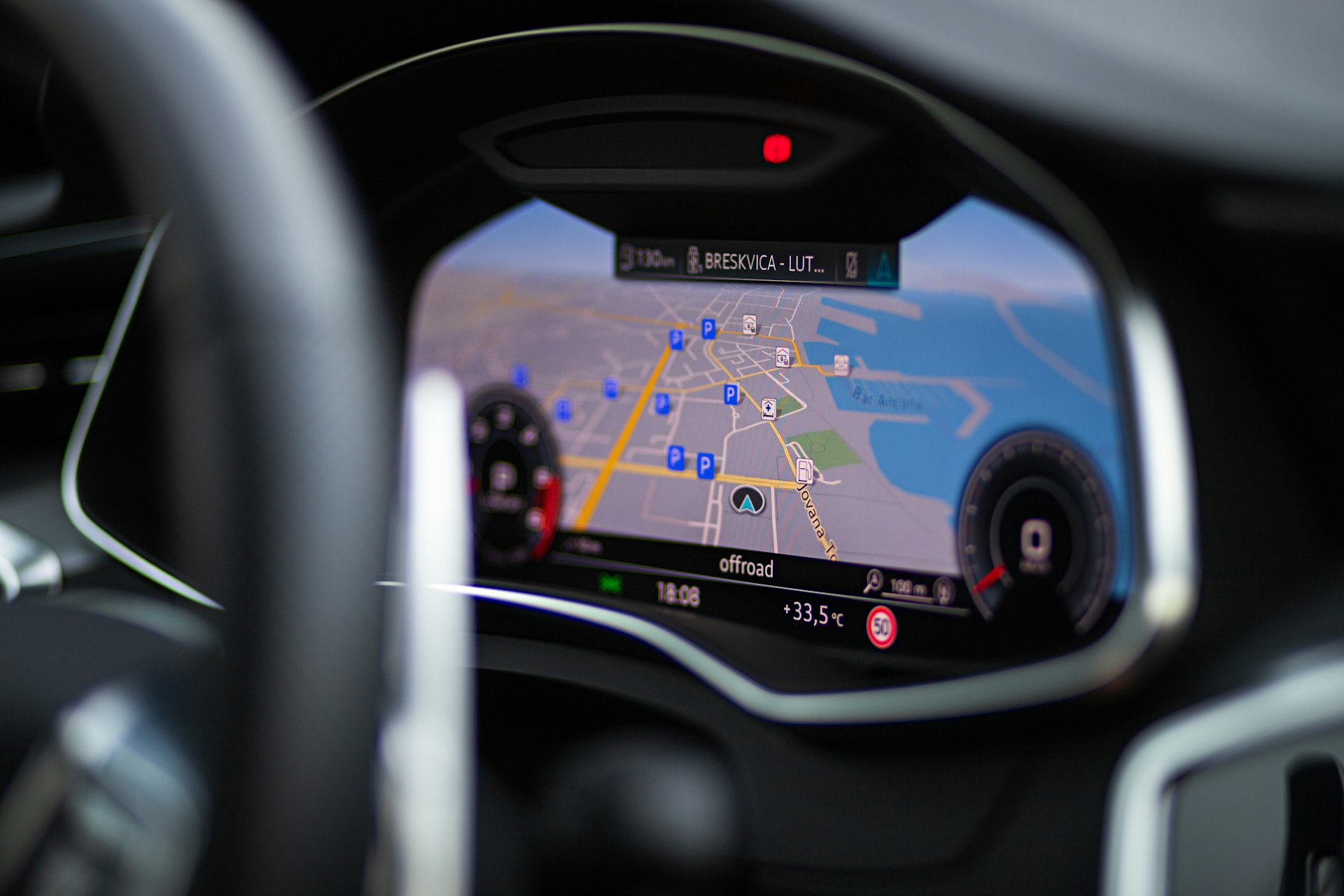How Robotics is Transforming Car Repair and Maintenance: What to Expect and How to Prepare

Photo by Valentin Petkov on Unsplash
The Next Revolution: Robotics in Car Repair and Maintenance
Robotics and automation are fundamentally transforming how vehicles are diagnosed, repaired, and maintained. In the coming years, the integration of robotics with artificial intelligence (AI), advanced diagnostics, and connectivity will redefine the automotive service landscape. The pace of change is accelerating, with projections suggesting that by 2025, 10-15% of jobs in automotive maintenance and repair may be automated, and by 2030, up to 70% of routine tasks could be handled by robots [2] . Understanding these changes is crucial for drivers, shop owners, and technicians alike.
Section 1: Why Robotics Matters in Automotive Service
The adoption of robotics promises significant benefits in car repair and maintenance. Automated systems can boost speed and precision, lower labor costs, and improve safety by taking on repetitive or hazardous tasks. For example, robotic arms already perform tire changes, oil replacements, and even some diagnostic checks in advanced workshops [1] . These robots reduce service time and ensure that each step is performed with consistent quality. As auto repair environments become more complex-especially with the rise of electric and autonomous vehicles-robots help shops meet the demand for efficiency and accuracy [2] .
Section 2: Smart Diagnostics and Predictive Maintenance
One of the most transformative applications of robotics is in smart diagnostics. Modern vehicles generate vast amounts of data from sensors and onboard computers. AI-powered diagnostic tools can analyze this data to quickly identify problems, often before a human technician could. For example, when a “check engine” light appears, AI systems can cross-reference sensor data and maintenance history to pinpoint the cause rapidly [1] . This technology reduces guesswork, helps avoid unnecessary parts replacement, and shortens repair times.
Predictive maintenance
is another major advance. Vehicles equipped with AI and telematics can monitor the condition of vital components in real time. Predictive algorithms can forecast when parts like brakes or batteries will likely fail, allowing owners or fleet managers to schedule service proactively and prevent unexpected breakdowns
[1]
. This proactive approach extends vehicle life and reduces costs for both owners and repair shops.

Photo by Beth Macdonald on Unsplash
Section 3: Automation in Routine Repairs
Robotics excels at performing repetitive, labor-intensive tasks. Automated systems are now capable of conducting oil changes, tire rotations, brake pad replacements, and battery swaps [2] . This allows human technicians to focus on more complex diagnostics and repairs. For example, a robotic system can handle multiple vehicles in sequence, greatly increasing shop throughput and reducing wait times for customers [3] .
For shop owners, investing in robotic systems can lead to higher productivity and potential cost savings over time. However, implementing automation comes with challenges, such as the need for staff training, upfront capital costs, and integration with existing shop management systems. To prepare, consider starting with modular robotic tools and gradually expanding automation as your team gains experience and as demand grows.
Section 4: Telematics, Connectivity, and IoT Integration
Telematics and the Internet of Things (IoT) are reshaping how vehicles communicate with repair shops and owners. Connected vehicles transmit real-time data about their health, driving patterns, and maintenance needs [5] . For repair professionals, this means adopting digital tools and specialized software to interpret this data and provide timely service. Over-the-air updates, remote diagnostics, and even remote repairs are becoming viable options as connectivity improves.
For drivers and fleet managers, telematics platforms offer the ability to monitor vehicles remotely, receive alerts about upcoming service needs, and even schedule appointments automatically. To leverage these benefits, start by choosing a telematics solution compatible with your vehicle or fleet, and ensure your service provider is equipped to handle connected vehicle diagnostics.
Section 5: Special Tools, Training, and Adaptation
As advanced driver assistance systems (ADAS), electric vehicles, and autonomous technologies become more prevalent, specialized service tools are essential. Smart diagnostic scanners, ADAS calibration systems, and EV-specific equipment are increasingly required to perform accurate repairs [4] . Auto shops must invest in ongoing training for technicians and stay updated on industry standards.
If you are a shop owner or technician, consider the following steps:
- Research training programs or certifications from reputable organizations such as the National Institute for Automotive Service Excellence (ASE).
- Network with equipment suppliers and industry groups to stay informed about the latest tool advancements.
- Adopt a continuous learning mindset and encourage your team to participate in online courses or manufacturer-led workshops.
For drivers, prioritize selecting service providers who demonstrate expertise in handling the latest vehicle technologies. Ask about their diagnostic tools, training, and experience with advanced vehicle systems.
Section 6: Sustainability and the Green Future
The automotive industry is also moving toward greater sustainability. As electric and hybrid vehicles become mainstream, robotics and AI are helping optimize their maintenance by monitoring battery health, managing software updates, and ensuring efficient energy use [5] . Green propulsion technologies such as biofuels and hydrogen will require new repair protocols and tools. Repair shops should monitor regulatory developments and consider investing in green certifications to stay competitive in this evolving market.
Section 7: How to Access and Implement Robotic Solutions
For those looking to adopt or benefit from robotics in car repair and maintenance, here are practical steps to get started:
-
Evaluate Current Needs:
Assess your shop’s workflow to identify tasks that could benefit most from automation, such as repetitive maintenance jobs or diagnostics. -
Research Verified Vendors:
Seek out established robotics and diagnostic tool providers. Consult industry publications, attend trade shows, and connect with peers to gather recommendations. -
Invest in Training:
Prioritize ongoing education for your team. Look for courses from recognized bodies such as ASE, or ask equipment vendors about training resources. -
Stay Informed:
Subscribe to automotive technology publications, attend webinars, and join industry associations to keep up with the latest trends and regulatory changes. -
Prepare for Integration:
Ensure your existing shop management systems can integrate with new robotic solutions. Consult IT professionals or solution providers about compatibility and data security.
If you are a vehicle owner or fleet manager, you can benefit from robotics and AI-driven maintenance by:
- Choosing service centers that advertise advanced diagnostic and robotic repair capabilities.
- Asking about real-time monitoring, predictive maintenance, and telematics options when servicing your vehicle.
- Inquiring about the shop’s experience with electric, hybrid, or autonomous vehicles, especially if your car features these technologies.
If you are unsure where to start, contact your vehicle manufacturer or dealership for recommendations on certified repair providers who utilize robotics and automation. For more information, consider searching for terms like “robotic auto repair training”, “telematics diagnostics”, or “ADAS calibration services” in your region.
Section 8: Overcoming Challenges and Moving Forward
Transitioning to robotic and automated car repair is not without challenges. Upfront investment costs, the need for skilled technicians, and keeping up with rapidly changing technologies are key concerns. However, gradual adoption-starting with modular automation tools and expanding as experience grows-can minimize risk. Collaboration with equipment suppliers, participation in professional networks, and continuous education are critical for long-term success.
For automotive professionals, embracing robotics is essential for maintaining competitiveness and meeting the demands of an increasingly complex vehicle landscape. For drivers, understanding the benefits and options available will help ensure safer, more reliable, and cost-effective vehicle ownership in the years ahead.
References
- [1] GMB (2025). How AI Is Changing The Auto Repair Industry In 2025.
- [2] 3Laws Robotics (2025). Robots and the Future of Automotive Repair and Maintenance.
- [3] Cougar Tire (2025). The Future of Automotive Maintenance: Trends to Watch.
- [4] Sobot (2025). How Special Service Tools Are Shaping Automotive Repair.
- [5] RIO (2025). Automotive trends for 2025: What to expect from the parts and maintenance market.
MORE FROM promospotlight.com













